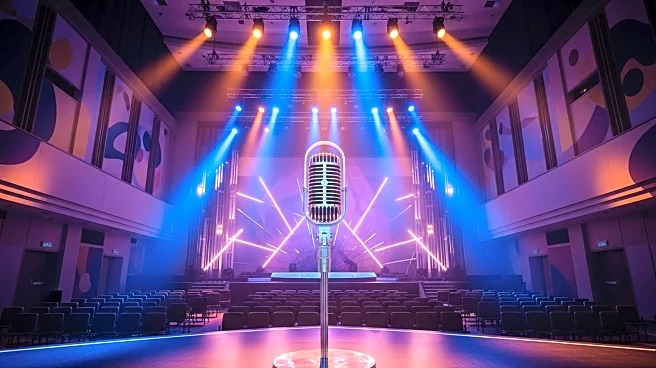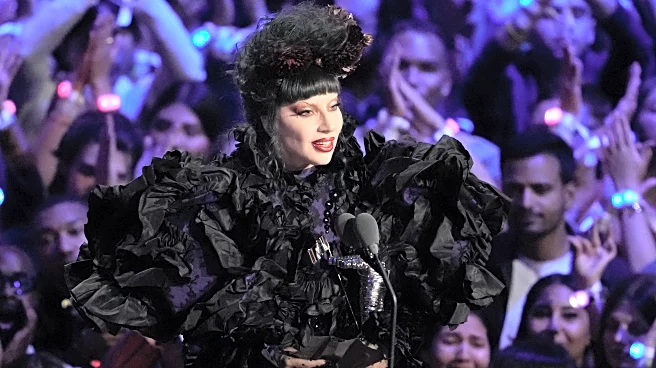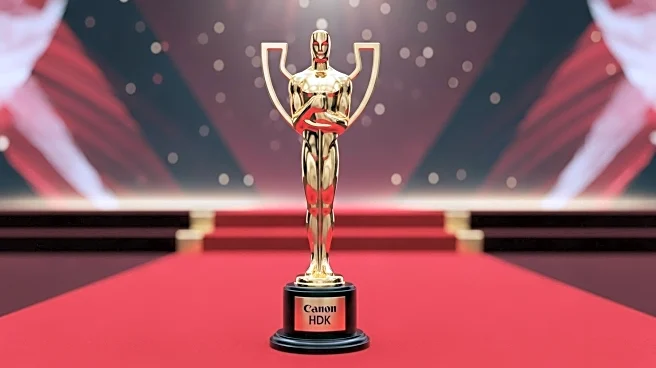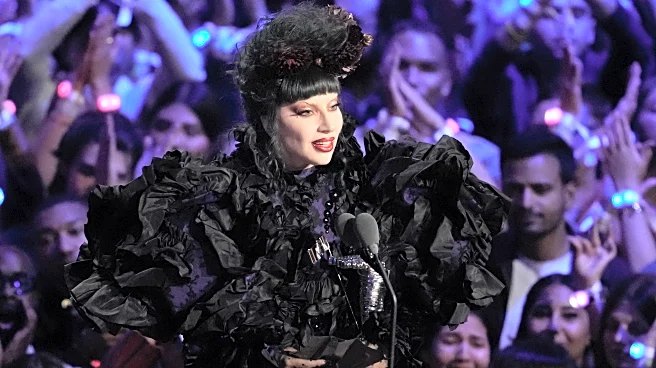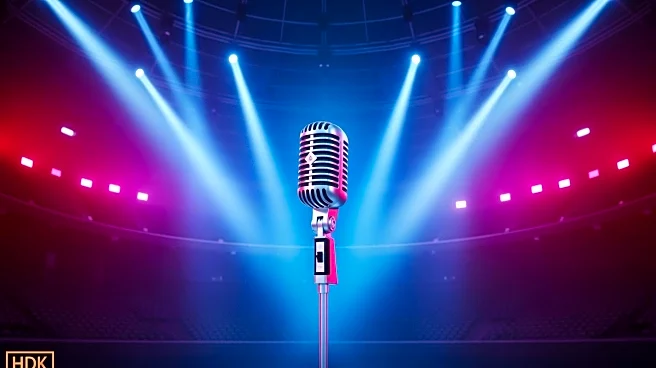What's Happening?
The 2025 MTV Video Music Awards (VMAs) took place at UBS Arena in Elmont, New York, on September 7, marking a significant night for Lady Gaga. Gaga, who received 12 nominations, the highest for any artist this year, won four Moon Persons, reinforcing her prominent position in the music industry. LL Cool J hosted the event, bringing his experience from previous VMAs and Grammy hosting duties. The ceremony featured several pre-announced awards, including the Video Vanguard Award to Mariah Carey, the Latin Icon Award to Ricky Martin, and the Rock the Bells Visionary Award to Busta Rhymes. The New Artist of the Year category was unexpectedly narrowed down to three finalists: Alex Warren, sombr, and The Marías, leaving out anticipated nominees like Gigi Perez and Lola Young. Kendrick Lamar, despite expectations, did not win Video of the Year but secured Best Cinematographer for his track 'Not Like Us'. Bad Bunny, despite multiple nominations, continued to miss out on a win in the Best Latin category.
Why It's Important?
The 2025 VMAs highlighted a notable shift in the music industry, with female artists dominating the awards. Out of 30 awards, women or all-female groups won 22, showcasing a significant change in industry dynamics. This trend reflects broader societal movements towards gender equality and recognition of female talent. The event also underscored the unpredictable nature of music awards, with Tate McRae winning Song of the Summer despite her track peaking at No. 33 on the Billboard Hot 100. The absence of a dedicated dance category since 2019 raised questions among critics and fans, indicating potential areas for future award category expansions. The VMAs continue to serve as a barometer for industry trends and artist recognition.
What's Next?
The VMAs' focus on female artists may influence future award shows and industry practices, encouraging more inclusive recognition of diverse talents. Discussions around the absence of certain award categories, like dance, may prompt organizers to reconsider and potentially reintroduce them in future events. Artists like Kendrick Lamar and Bad Bunny may seek to leverage their nominations and performances to further engage with their audiences and address perceived snubs. The evolving landscape of music awards could lead to changes in nomination processes and criteria, reflecting the dynamic nature of the music industry.
Beyond the Headlines
The dominance of female artists at the VMAs could inspire more female musicians to pursue careers in the industry, knowing their contributions are increasingly recognized. This shift may also influence record labels and producers to invest more in female talent, potentially altering the industry's gender dynamics. The ongoing discussions about award categories could lead to broader conversations about how music genres are represented and celebrated, impacting how artists strategize their releases and marketing. The VMAs serve as a cultural touchstone, reflecting and shaping societal values and industry standards.


